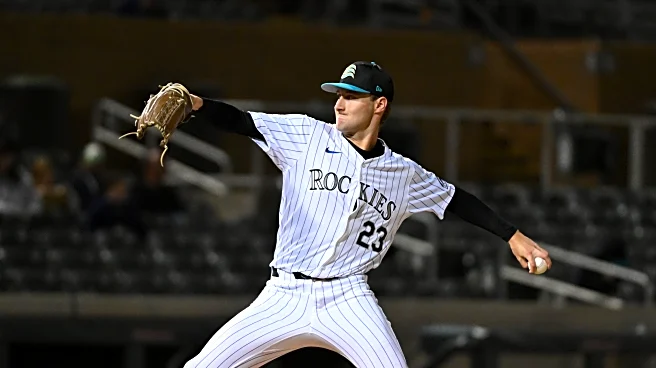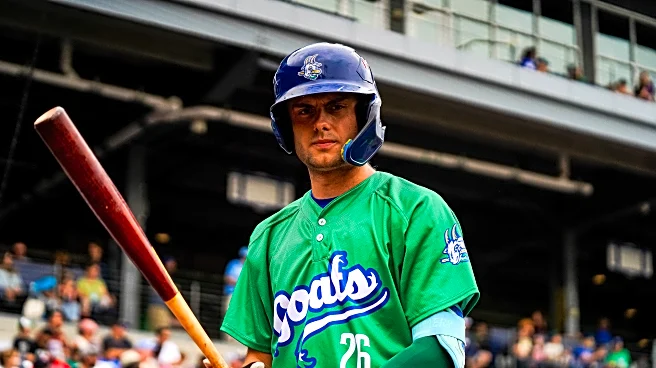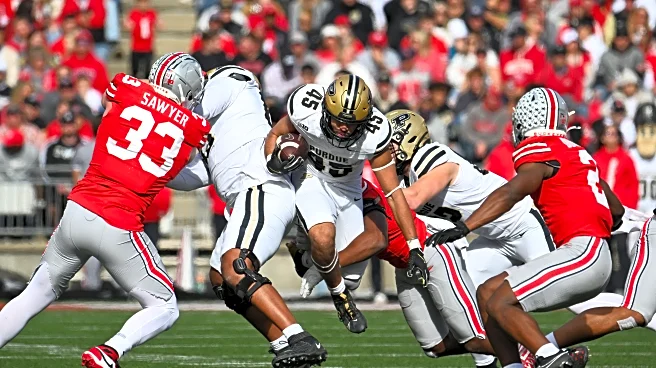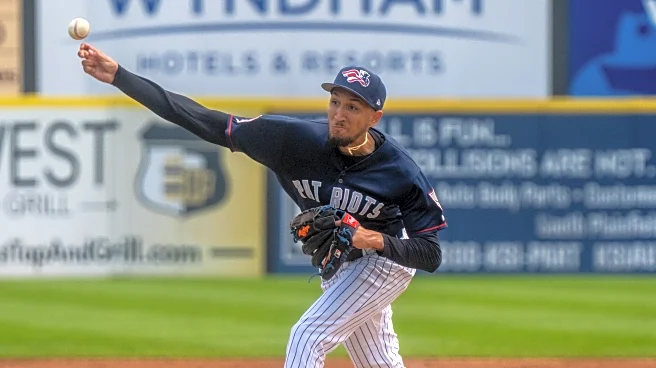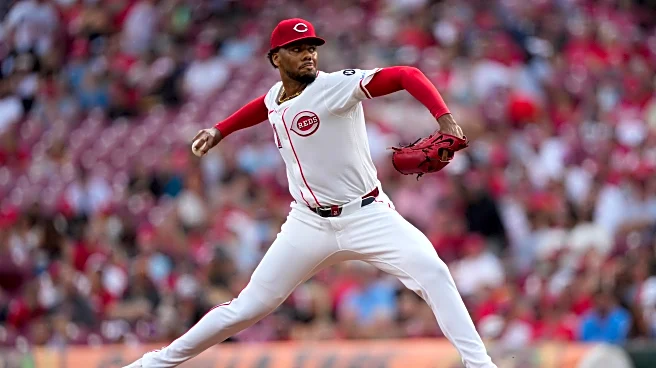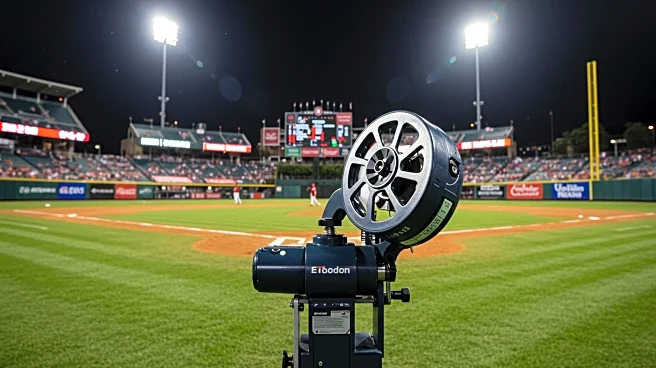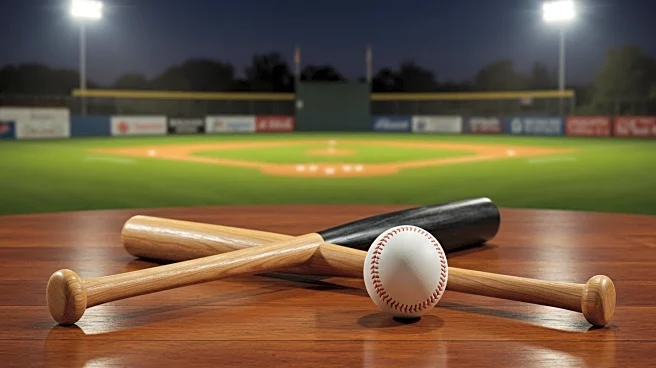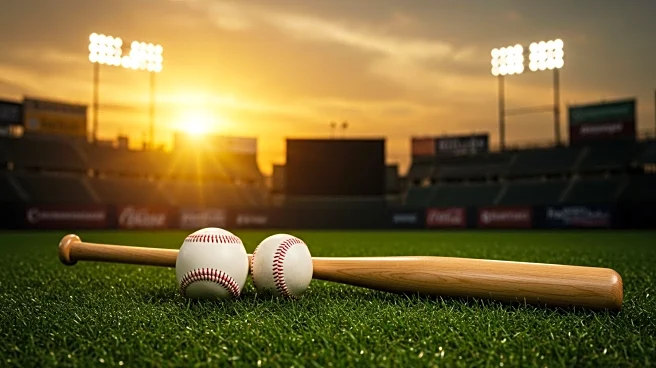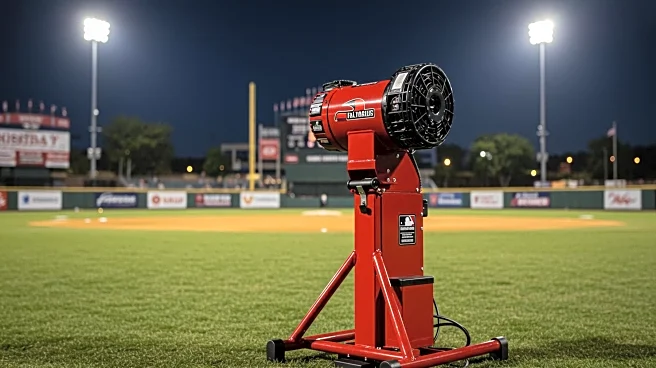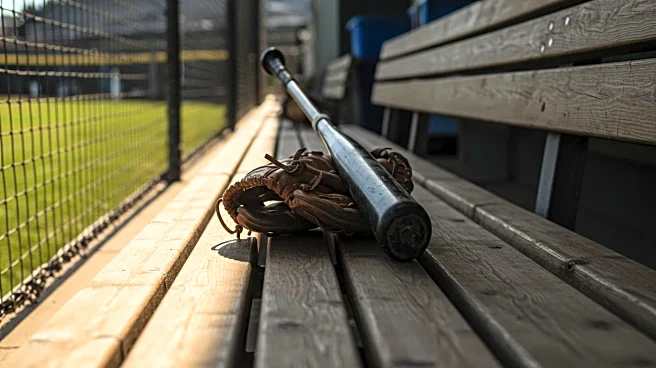
It’s time to reveal the five players who made it the closest to the mid-season 2025 top 30 Purple Row Prospects (PuRPs) list as voted on by the Purple Row community recently. For each player, I’ll include a link to individual stats and contract status (via Baseball-Reference), as well as notes on their 2025 season if applicable. I’ll also include where I put each player on my ballot. All ages are as of the day the article is posted.
35. Ethan Hedges (54 points, 10 ballots), 2025 Third Round, 3B at High-A (21)
Hedges was the Rockies’ third round pick in the 2025 draft, 77th
overall out of the University of Southern California. The 6’1” 21-year-old righty was a two-way player during his draft year but will be a third baseman as a professional. Hedges signed for $950k, about $110k below the slot value for the pick. As a prospect, Hedges boasts an elite arm (as a college pitcher, you’d hope so) and some good athleticism on defense, though there isn’t another standout tool.
Hedges was a three-year starter with USC, accumulating a combined batting line of .308/.413/.488. This year he hit a very strong .346/.462/.619 with 14 HR among his 30 extra-base hits and 10/10 steals in 288 plate appearances, which equates to a 147 wRC+. In addition, he appeared in 15 games as USC’s closer, throwing 15 innings and getting 9 saves with a 2.40 ERA and 1.13 WHIP. He was recently assigned to High-A Spokane to begin his professional career, with two games under his belt to date.
MLB Pipeline ranked him 159th overall in the draft (well below where he was picked), then placed him 20th in the system as a 40 FV player with a 60 arm and 55 field grades:
Hedges has a very good feel for the game, and while he doesn’t necessarily have any “wow” tools, he maximizes what he has thanks to outstanding makeup. It’s a line-drive approach from the right side of the plate, and he routinely finds the barrel, enabling him to post elite-level numbers in batting average and wOBA. He can drive the ball, and while he reached double figures in home runs this past spring, he profiles more as a guy with some extra-base doubles pop than huge over-the-fence thump in the future.
An average runner, Hedges has the chance to be a very solid defender with good instincts at the hot corner. He also has a plus arm, one that sits 93 mph with a fastball as a reliever to go along with a slider and a changeup. The hope is some more power can be teased out of him as a pro so that he can profile at third.
Eric Longenhagen of Fangraphs ranked Hedges 109th in the draft class as a 40 FV player and lists him 29th in the system with a 60 arm and 60 future field tool:
Excellent third base defender with plus range, hands, actions, and arm. Quick-footed in on the grass, makes strong accurate feeds to second base, value-altering defense. All fields doubles spray. Slightly chase-prone but contact pieces of profile are closer to average. Hands load really late and there might be more in the tank on offense if Hedges makes adjustments to be better on time. His bat speed looks better than his measureable power. Below-average everyday third baseman as currently constituted, defensive ability might portend competence at other positions that would allow for a utility role.
Keith Law of the Athletic wrote this about Hedges after the draft:
USC third baseman Ethan Hedges (3) went from two homers last year for the Trojans to 14 this year, although his batted-ball data points more to average power. He doesn’t hit spin well at all, and projects as a lower-OBP guy with maybe 15-18 homers at his peak. He also threw 15 innings in relief this year, topping out at 95 with a high-effort delivery, so he clearly has the arm to play anywhere on the field.
Hedges should be able to handle the hot corner defensively, but it’s his offensive projection that’s more of a question for scouts. The draft pedigree and prospect profile were enough for me to rank Hedges 30th on my ballot as a 40 FV player. He’ll likely begin next year with High-A Spokane, where he will get some looks at professional pitching at what should be a league average level.
34. Jack Mahoney (55 points, 8 ballots), 2023 Third Round, RHP at Double-A (24)
Mahoney is a prospect that doesn’t necessarily excite me, but the pedigree, role, and polish make him a player to track and a 40 FV player who was the last cut from my list. He was Colorado’s third rounder in 2023 out of South Carolina, going 77th overall and signing for a slightly below slot bonus of $925k. Mahoney dabbled with hitting in college (he was a shortstop in high school as well) but was mostly a pitcher. The Illinois native pitched very well as a freshman in 2021 (1.62 ERA in 33 1⁄3 IP) but needed Tommy John surgery mid-way through that campaign and also missed all of 2022 on the mound — though he did swat two homers in 19 PA as a DH. Mahoney recovered his stuff enough as a junior to get drafted in the third round.
The just-turned 24-year-old 6’3” righty was initially handled more slowly than a high-round SEC pitcher draft pick might expect, but a jump up to Double-A Hartford this year (where he is 1.9 years younger than league average) after a cameo in High-A last year has him back on his expected trajectory. Mahoney spent most of 2024 in Low-A Fresno, throwing 94 2⁄3 innings with a 3.52 ERA, 1.15 WHIP, 8.7 K/9 rate, and 2.1 BB/9 rate. After an August promotion to High-A, Mahoney made six appearances (five starts) with Spokane, adding 25 1⁄3 innings with a 5.33 ERA, 1.42 WHIP, 8.5 K/9 rate, and 2.5 BB/9 rate. It’s very nice to see that, two years after his Tommy John surgery, Mahoney was able to soak up 120 innings in 2024.
This year with Hartford, Mahoney has made 19 starts with a 5.38 ERA, 1.61 WHIP, 7.1 K/9 rate, and 3.7 BB/9 rate in 82 innings — though his 4.31 xFIP suggests a bit of bad fortune to get those run prevention numbers. Mahoney has been healthy but did have a one week stint in late May on the Rockies’ development list. He has struggled to provide length in his outings — only once has he gotten through six innings, though some of that is no doubt development-related by the Rockies.
Eric Longenhagen of Fangraphs gave Mahoney a 40 FV grade, slotting him 22nd in the system, with a 55 future command grade highlighting the package:
Mahoney played both ways a little bit as an underclassman at SC. He pitched out of the bullpen during most of his freshman year, then missed 2022 recovering from Tommy John, though he was still able to hit some that year. He held 92-94 and touched 96-97 across 17 starts as a junior, and Mahoney was thrown right into the fire from an innings standpoint in 2024, as he worked 120 frames and ended his season in Spokane. It was a very positive campaign for Mahoney even though the Cal League was probably beneath his skill level — he held average velocity all year and walked just 30 guys. His fastball tails, he commands a short, mid-80s slider sitting 84-86 mph, and he has arm-side changeup feel. Mahoney’s feel for location is advanced considering his lack of college reps and he has a shot to develop three average pitches. There’s a backend starter projection here, with a non-zero chance he’s scratching the surface of more.
Keith Law of the Athletic ranked Mahoney 18th in the system in February:
Mahoney went from pitching in the SEC in 2023 to Low A in 2024, a step back in the competition he’d face; he didn’t dominate there and then got hit around in six outings in High A at the end of the year, with a 5.33 ERA and a .517 SLG allowed. He’s 92-94 on the sinker with a 55 changeup and average slider, mixing in a cutter and curveball as well, giving up too much hard contact on the fastball because he throws it in the upper half of the zone too much. He should have had better results in High A with his present stuff, and could still end up a fourth or fifth starter if he improves his plan of attack even just with the pitches he currently has.
Mahoney ranked 120th overall in MLB Pipeline’s 2023 draft rankings and was 21st overall in their system rank as a 40 FV player before the season (though he isn’t in the current top 30):
A 6-foot-3 right-hander, Mahoney saw his stuff bounce back pretty well upon his return. It starts with a fastball that tops out at 97 mph and sits in the 92-95 range with late natural sink to it. His mid-80s slider can be inconsistent, but at its best, it has horizontal and vertical break. He throws his changeup with the same velocity, and when it’s on, it features good fade. He has the ability to get outs early in counts on the ground, as well as strike guys out.
Mahoney is a good athlete who quarterbacked his high school football team and even hit a couple of home runs in 2022 for South Carolina while he was rehabbing his elbow. He has a feel of what he wants to do on the mound, though he’ll need to keep refining his command and control of his repertoire. It’s a pretty good rotation piece starter kit, with perhaps a leap forward to come another year removed from the elbow surgery.
Mahoney’s athleticism, command, and starter projection drive the profile for me — though as mentioned above the overall package might not be as exciting as other pitchers in the system. Mahoney has another season before a Rule 5 designation must be made, so a return to Hartford next year seems possible.
33. Oscar Pujols (55 points, 8 ballots), 2024 International Free Agent (DR), RHP at Dominican Summer League (18)
Pujols was Colorado’s top international free agent pitcher signing in the 2024 period, receiving a $600k bonus. The 6’3”, 155-pound starter is in the upper 80s/low 90s now and boasts a promising curveball. MLB Pipeline ranked Pujols 36th among their international free agent prospects from 2024 (and second among pitching prospects) as a 50 FV player, though he’s not in their top 30 currently:
Pujols has an easy, repeatable delivery and a three-pitch repertoire that features a fastball, curveball and changeup. The advanced teen uses the same arm action and delivery on all his pitches, which will serve him well as he progresses through the Minor Leagues. Scouts have also noted Pujols’ aggressiveness and strike-throwing ability.
His fastball hovers in the 88-92 mph range, and more velocity could be on the way as he matures and his body develops. His secondary pitches also have plus potential. Scouts rave about his composure and mound presence. He doesn’t get rattled or deviate from his plan when he’s on the mound. Like most prospects his age, Pujols lacks some polish but that should come with daily instruction at a team’s academy.
After signing, Pujols adjusted well to the professional game in the DSL against hitters who were on average 1.6 years older than him. In 26 2⁄3 innings across seven games (Pujols didn’t pitch at all in July, so there was possibly an injury in there), he had a 2.36 ERA, 1.09 WHIP, 9.8 K/9 rate, and 2.0 BB/9 rate. This year, Pujols was sent back to the DSL, but he’s only pitched in three games, all in June. One must surmise there is some kind of injury, but no details have been shared. The good news is that in those three games, Pujols went 8 1/3 innings, allowing only one run on four hits with 12 strikeouts and no walks. It’s just a shame there’s not more than those games in his 2025 stat line.
I consider Pujols a 35+ FV prospect as I need some more information and stats on him to form a clearer picture of the upside. Assuming good health, the Rockies will probably bring Pujols stateside to the ACL next season at some point with a late season appearance in Low-A Fresno possible.
32. Riley Kelly (57 points, 9 ballots), 2025 Fourth Round, RHP at Arizona Complex League (21)
Kelly was Colorado’s fourth round pick, 107th overall in the 2025 draft out of UC-Irvine. The 6’5” 21-year-old righty starter signed for a $700k bonus, just about $15k under the slot value. Like Mahoney (and many other high Rockies draftees), Kelly was a high school quarterback with some good athleticism. He was thought of highly enough in high school to be in the top 250 of MLB Pipeline and get drafted in the 20th round in 2022 (though he didn’t sign). His standout trait is a high-RPM curveball, combined with mid-90s velocity and a decent changeup.
The first couple years of college didn’t go well for Kelly, who threw only 20 1/3 innings with poor results while battling a back injury. In his draft year, Kelly started the year in the bullpen for UC-Irvine before moving back to the rotation in mid-March. In his second start, he outdueled eventual #2 overall pick Tyler Bremner en route to a season total of 66 2/3 innings with a 3.78 ERA, 1.47 WHIP, 9.5 K/9 rate, and 4.3 BB/9 rate.
Kelly was ranked 139th overall by MLB Pipeline in the draft and is now ranked 22nd in the system as a 40 FV player with 55 grades on his fastball and curveball:
Kelly’s fastball sits around 92-93 mph and he can crank it up to 96 at times. But his best pitch has always been his curve, especially when he can land it for strikes. It’s a nasty 11-to-5 breaker thrown in the upper 70s that routinely registers over 3,000 rpm and flashes plus. He has a low-80s changeup that can be effective as well.
While Kelly’s strike-throwing has been inconsistent, scouts saw better quality strikes with the move to the rotation. He should get every opportunity to start, with the knowledge that the fastball-curve combination could tick up if he had to move back to the ‘pen.
Here’s what Keith Law of the Athletic wrote about Kelly after the draft:
UC Irvine right-hander Riley Kelly (4) moved from the Anteaters’ bullpen to the rotation this year and blossomed, making 12 starts along with five relief appearances and lowering his ERA by a run and a half. He’s up to 96 but he sits more 91-93, generating a ton of whiffs on his 82-85-mph straight change, although his 11/5 curveball looks like it should be his best pitch. He has 45 control right now, but if that gets to 50, he’s a starter.
If Kelly can command that hammer and stick in the rotation, he becomes an interesting starter prospect. Pending that evidence, I ranked Kelly as a 35+ FV player with some upside but not on my list. Kelly has yet to make an appearance as a professional, but will start next year at High-A Spokane or Low-A Fresno.
31. Michael Prosecky (62 points, 12 ballots), 2022 Sixth Round, LHP at Double-A (24)
When the Rockies signed Prosecky to a slightly over-slot $300k bonus after drafting him in the sixth round in 2022, most observers thought the left-handed pitcher would be ticketed for the bullpen. After all, that’s where the 6’3” hurler had distinguished himself in college as Louisville’s closer. Instead, the now 24-year-old made the transition to the starting rotation in his first full professional season and it went well.
After a strong 2023 spent in Low-A Fresno, Prosecky was delayed by elbow inflammation in 2024 until mid-June, which limited him to 48 2/3 innings across 14 games for a combination of the ACL team, Low-A, and High-A. The good news was that he struck out a sterling 14.4 batters per nine innings, albeit against younger competition. Prosecky also received an Arizona Fall League valedictory, where he threw an additional 15 1⁄3 innings with poor run suppression numbers (7.63 ERA, 2.02 WHIP, and 5.3 BB/9 rate) and strong strikeout numbers (13.5 K/9 rate). All told, across 22 appearances in four leagues in 2024, Prosecky ended up with 101 strikeouts in 64 innings pitched (14.2 K/9 rate), 30 walks (4.2 BB/9 rate), and 37 earned runs allowed (5.20 ERA).
This year, Prosecky went back to High-A Spokane, where he was 0.8 years older than league average. He stayed healthy and threw 88 2/3 frames of 3.86 ERA ball in 18 starts with a 1.26 WHIP, 9.4 K/9 rate, and 4.2 BB/9 rate. That’s a significant K/9 rate drop, but the run prevention numbers improved enough to earn Prosecky a post All-Star break promotion to Double-A Hartford, where he is 0.9 years younger than league average. In four starts so far with Hartford, Prosecky has a nice 2.61 ERA in 20 2/3 innings built on his 1.36 WHIP, 7.8 K/9 rate, and 5.2 BB/9 rate. His 4.83 xFIP indicates some good fortune so far, but overall it’s been nice to see Prosecky succeed against upper minors hitting as his Rule 5 decision approaches this offseason.
Prosecky is ranked 26th in the system by MLB Pipeline as a 40 FV player:
The 6-foot-3 left-hander does have the size and repertoire to potentially start, with a four-pitch mix. At his best, he runs his fastball up to 95-96 mph and can command it well, missing bats with it along the way. He has a slider that has late action with depth, a slower curve that he can use to steal a strike and an improving feel for his changeup as well.
Prosecky had thrown just 64 innings in college before topping 100 IP in 2023. The Rockies are hopeful that a now completely healthy Prosecky, who has generally been around the zone when he’s at his best, can hit the reset switch and start moving up the ladder again in 2025.
Eric Longenhagen of Fangraphs ranked Prosecky in the 35+ FV tier and 33rd in the system on the strength of a 60 future grade curveball:
Prosecky only sits 91-93 mph, but hitters don’t seem to pick it up. The southpaw has a short, vertical arm stroke that helps his heater play as an in-zone bat misser despite below-average velocity. He hides the ball forever and it appears to jump on hitters very quickly. He throws a classic 12-to-6 curveball off of that, a pitch that’s virtually indistinguishable from his fastball until it starts to bend with huge, bat-missing depth. Those two pitches give Prosecky a lower-leverage reliever’s foundation. Prosecky’s arm stroke isn’t always well timed, and his strike-throwing results have been mixed during this try as a starter. In the 2024 Fall League, Prosecky was working with a second breaking ball, a slider in the 82-84 mph range that looked below average. There’s definitely more variance here than is typical for a guy who sits 92, but Prosecky is tracking like a low-leverage lefty.
Baseball Prospectus ranked Prosecky 20th in the system before the season:
Sidelined for the first half of the season in rehab due to an elbow injury, the Louisville product racked up strikeouts like he was being billed for a whole season. 78 punchouts in 48 ⅔ frames to just 21 walks is more pertinent than the somewhat gaudy ERA the deceptive southpaw was saddled with. Like several of the lefties on this list, Prosecky fails to light up the radar gun but gets by thanks to plus carry on a low-90s heater. With a four-pitch mix, Prosecky has more of a typical starter’s repertoire. What he lacks is reps, as a reliever in college who then missed time due to injury. Colorado sent him to the Arizona Fall League, where he continued to miss bats but also yielded runs in an environment more friendly to older hitters. A full-health season would see Prosecky end next year having handled a decent chunk of time in Hartford, continuing to miss bats. His floor is lofty as a bullpen piece, but as long as he seems startable he’s performed enough to merit the looks.
Law of the Athletic ranked Prosecky 14th in the org before the season
Prosecky was my sleeper for the Rockies last year, but after he went to an outside lab to try to boost his velocity, he came down with elbow inflammation and never got on track, throwing 63 innings total between the regular season and Arizona Fall League, with terrible results in the fall and in High A. Even when he did pitch, he was 90-94, down from 92-95 the year earlier; he barely used his slider; and his command was way off. When healthy, he’s got a four-pitch mix, with the slider his best offering and a changeup that could flash plus but didn’t sit there. There’s deception in his delivery to help the fastball play up as well, as long as he’s locating it. Let’s hope a full offseason of rest gets him back to his 2023 form, when he looked like he might be a mid-rotation starter.
It’s interesting to see the difference in evaluation on the curveball — for Law and MLB Pipeline, it’s Prosecky’s weakest pitch but for Longenhagen, it’s his best.
Prosecky has been a pleasant player-development surprise for the Rockies thanks to his jump up the pitcher role value spectrum and effectiveness in the role, though 2024 was more of a sideways step than a forward one due somewhat to the elbow injury. He’s missed fewer bats this year but has taken a step forward in run prevention at a higher level. We’ll see if the Rockies prioritize him in the upcoming Rule 5 draft protection decisions. I ranked Prosecky in the middle of my 40 FV tier, 25th on my list.
To see the players that did make the cut, check back over the week or so as I unveil the mid-season 2025 PuRPs list five at a time!
